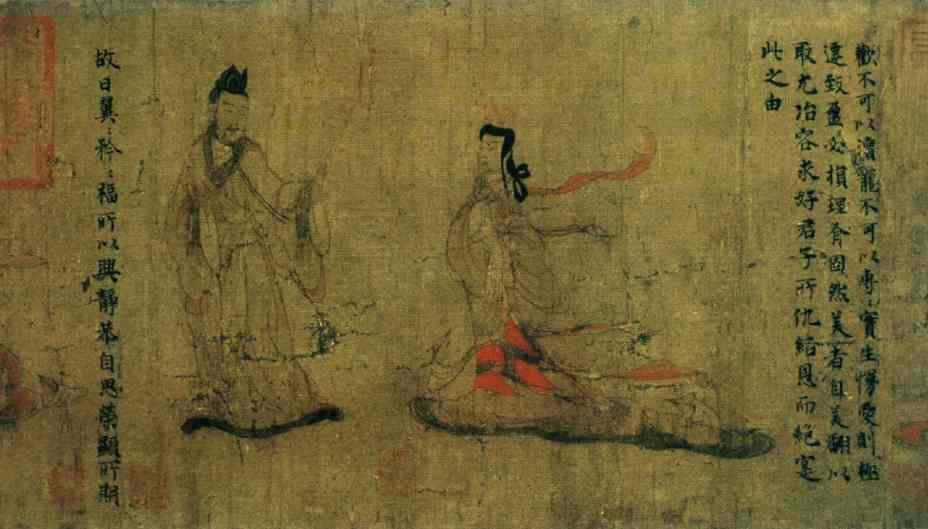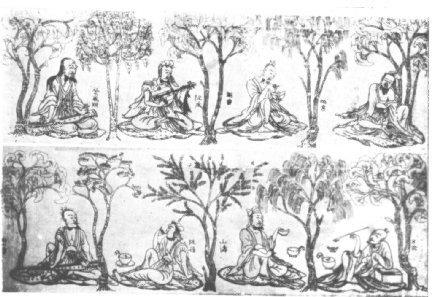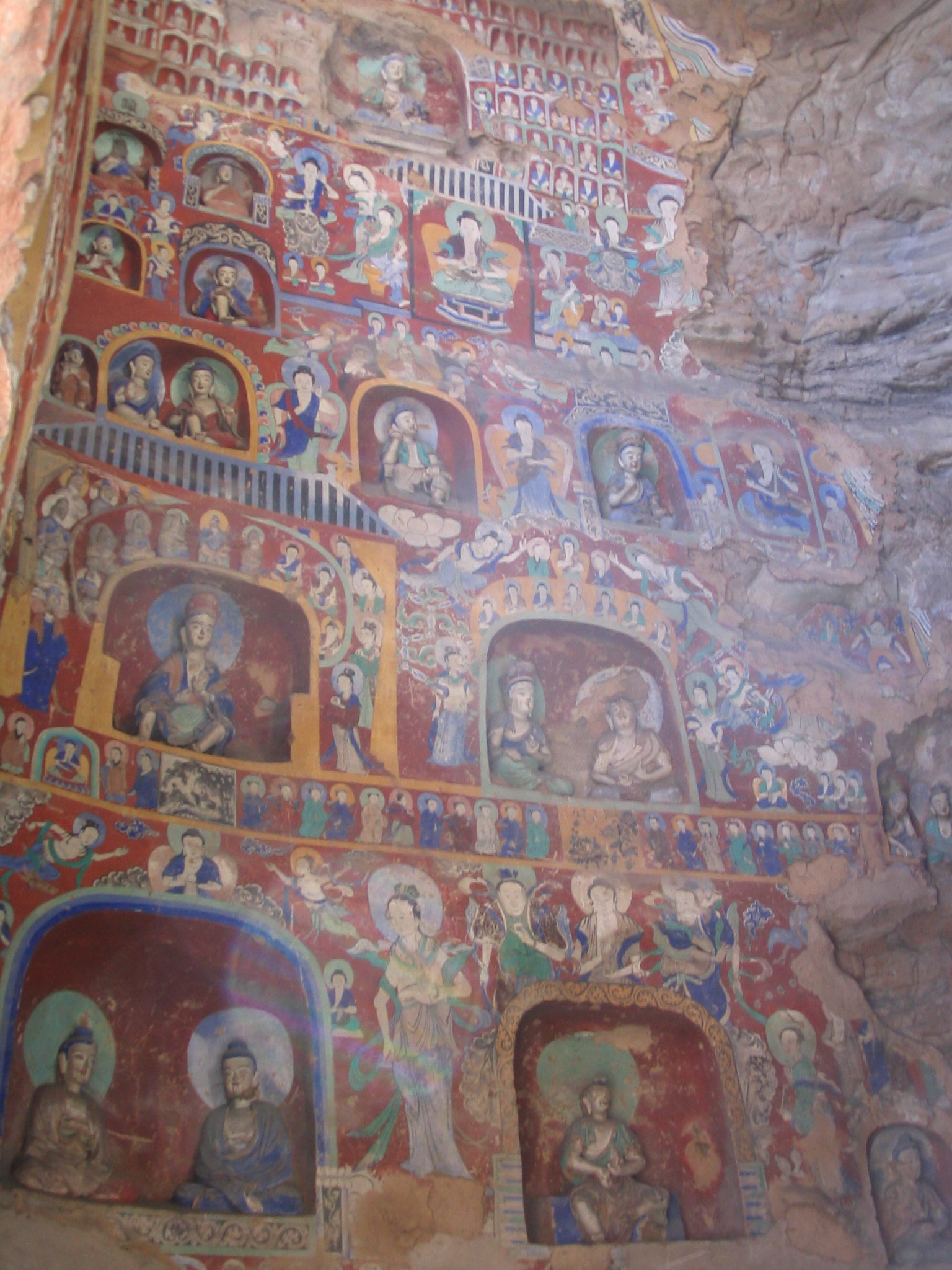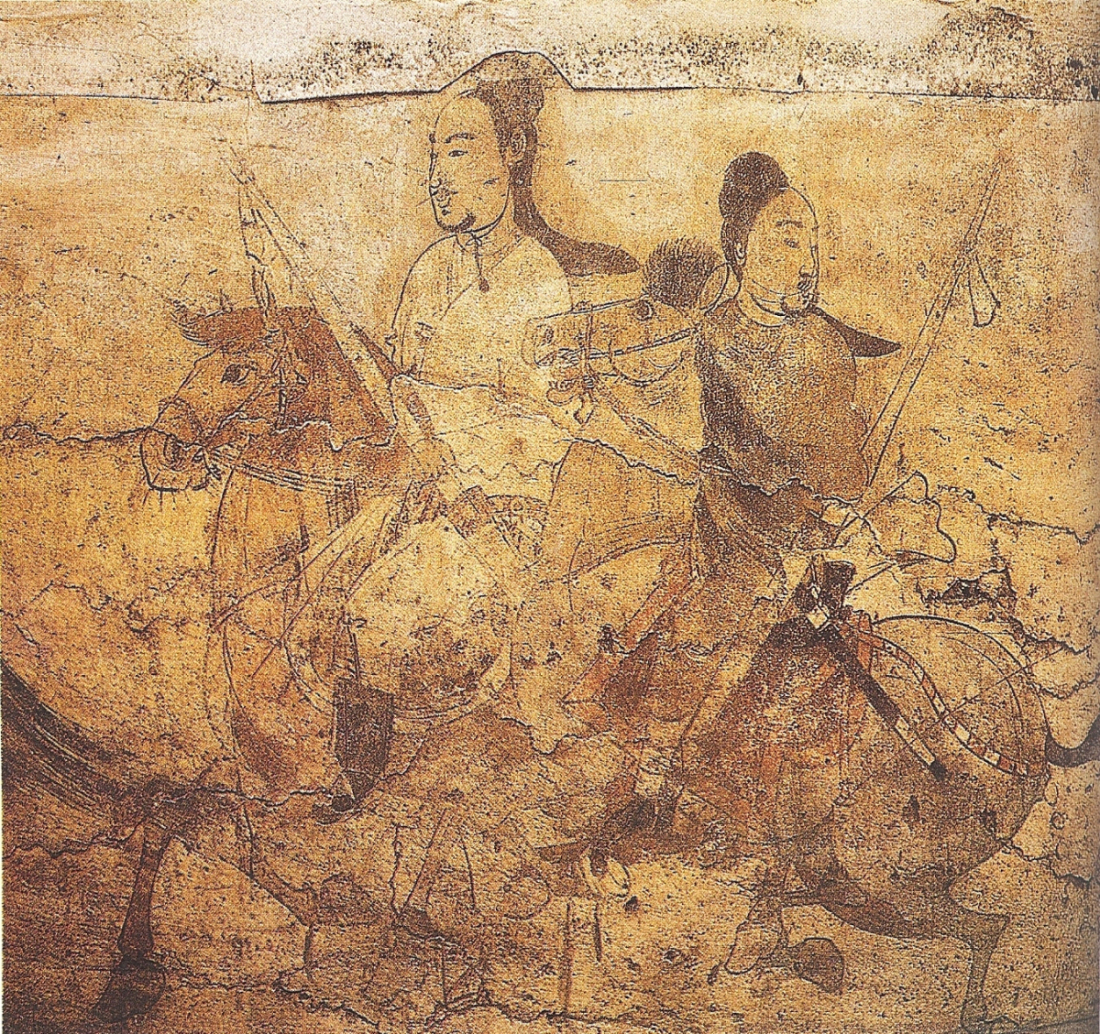|
Part of the scroll for Admonitions of the Instructress to the Palace Ladies, probably a Tang Dynasty ... 
Part of the scroll for Admonitions of the Instructress to the Palace Ladies, probably a Tang Dynasty copy of the original by Gu Kaizhi Seven Sages of the Bamboo Grove, an Eastern Jin tomb painting from Nanjing, now located in the Shaan ... 
Seven Sages of the Bamboo Grove, an Eastern Jin tomb painting from Nanjing, now located in the Shaanxi Provincial Museum. Northern Wei wall murals and painted figurines from the Yungang Grottoes, dated 5th to 6th centuries ... 
Northern Wei wall murals and painted figurines from the Yungang Grottoes, dated 5th to 6th centuries. A scene of two horseback riders from a wall painting in the tomb of Lou Rui at Taiyuan, Shanxi, Nort ... 
A scene of two horseback riders from a wall painting in the tomb of Lou Rui at Taiyuan, Shanxi, Northern Qi Dynasty (550–577) |